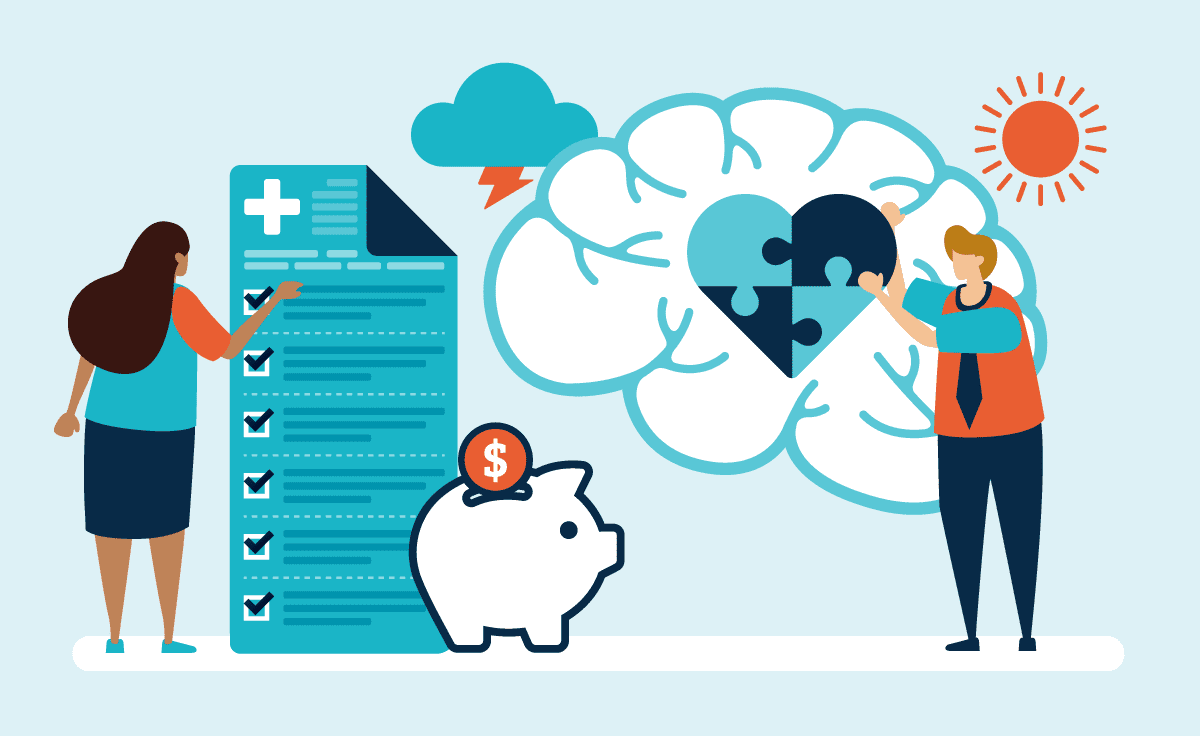A well-planned onboarding can help resolve several work-related affairs. Be it onboarding remote workers or in-office workers, this process never lags when it comes to training, managing employees, etc.
If done right, this long and tiring process can keep track of your employee’s mental health as well.
Before plunging into how it might assist in doing so, let’s first know what is onboarding in HR.
Onboarding is a word used in the human resources field to describe the process of integrating a recruit into a company. Though it is often a 90-day-long process, all the struggle and waiting are worth it as when the onboarding process is over, it gives rise to more confident and competent employees.
We must keep in mind that working remotely during a pandemic is not the same as a regular “working from home” job. It’s important to stop and think about how this pandemic had affected both our physical and mental health. For instance, according to Qualtrics, 75% of people say they feel more socially alienated, 67% of people report more stress, 57% of people are feeling greater anxiety, and 53% of people say they feel more emotionally drained. Therefore, paying attention to their mental health is a necessity.

Source: pinterest.com
The Advantages of a Positive Work Environment
According to experts, every dollar invested in exceptional mental health services yields a $4 return in improved health and productivity.
That’s because creating a positive work environment that promotes mental health initiatives results in:
- Lower absenteeism
- Improved engagement
- Higher productivity
- Better communication and collaboration
- Greater loyalty and retention
- Higher levels of empathy
All of these benefits demonstrate that employers who aim to reduce stress and help their remote employees better manage their stress levels will win in more ways than one.
Ways to support remote workers’ mental health
Leaders need to emphasize that the organization prioritizes mental wellness. According to the National Alliance on Mental Illness, 8 in 10 workers report that the stigma and shame surrounding mental health restrict them from getting treatment for mental health disorders.
Train managers to be open regarding this serious issue and be empathetic toward their employees. Small, thoughtful notes from the supervisors like, “We talk about and support mental health here,” gives the employees an assurance that they can talk and seek help if needed.
Senior executives can also share their mental health tales on the workplace communications app by writing them down or recording them. It is always nice to have someone you can look up to and also relate to.

Source: connectyourcare.com
Walk them through the resources
Employees should be made aware that their health insurance policies provide mental health benefits. However, they could be unaware of the extensive use of telehealth, which includes internet counseling therefore, you can walk them through every facility your organization provides, on their very first day at work.
According to an American Psychiatric Association survey, only 2% of psychiatrists saw the majority of their patients via telemedicine before the pandemic.
By removing obstacles like travel time and privacy concerns, telehealth can improve access to mental health care. By discussing their telehealth experiences, managers can further demonstrate the company’s dedication to mental health.
Socialization has been shown to have positive effects on mental health, but sadly, remote employees do not have the opportunity to catch up with coworkers over birthday treats and hallway conversations.
To show employees they are more than just cogs in the machine, managers can include some nonobligatory social time in their team’s schedule, like virtual coffee breaks, happy hour at 4, a team lunch, online group crafting sessions or watch parties, or maybe online game time with small prizes.
Team-building activities that allow people to connect and discover common interests will benefit everyone on your team, not just those with mental health issues.

Source: businessinsider.com
Appreciate and be thankful to them for their efforts
True and honest acknowledgment from the employer is obviously not a replacement for mental health care, but it feels nice.
Under any condition, employees do what they can to adapt to new ways of working. Therefore, a bare minimum would be a thank-you note or some positive feedback at a meeting, as this might boost their mood and energy for quite a few days.
Encourage PTOs
Spread awareness and reaffirm to all your employees that mental health days count. 43% of workers claim that stress at work has caused them to get physically ill since the outbreak of COVID-19. It’s vital to encourage remote workers to take PTO (paid time off) since they can be enticed to connect to their laptops while physically ill.
Encourage physical movement during work hours
Productivity does not mean sitting in a place for hours in front of the laptop screen and murdering your eyesight. Managers should encourage their workers to engage in physical activity because exercise has been shown to have positive effects on mental health.
Permit your staff to schedule time for exercise, organize phone-based walking meetings, and bring back stand-up meetings by urging your team to forego the video and get some fresh air.
Businesses can provide home yoga or fitness memberships or promote the use of the fitness tools offered through their well-being platform. Employers could wish to pay for treadmill desks, standing desks, and exercise equipment.
If you are a small business, and cannot afford all these, try at least gamification of the workplace like some step count challenge or fitness trackers. And to encourage them in taking on these challenges, provide rewards and titles after every week.

Source: pixabay.com
Conclusion
Focusing on mental health in the workplace is critical to caring for your employees. However, there is no one-size-fits-all solution for keeping your remote workers happy and healthy.
So you’ll need to test a few of today’s ideas to see what works best for your team.
Begin by addressing the top workplace stressors that your employees have identified. Then devise a strategy for reducing these and encouraging better self-care. As a result, your company and its outstanding employees will be in a much better position.
